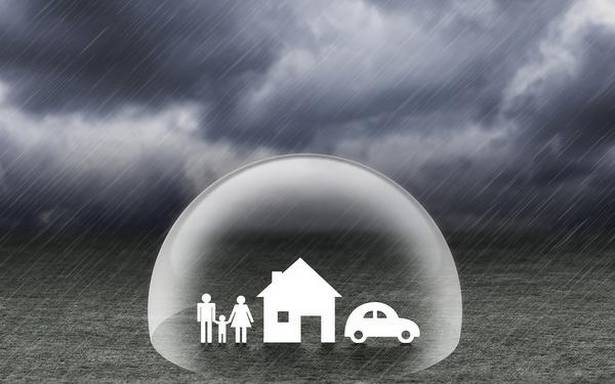Experts say home insurance, which can be bought by owners or tenants, can help residents with losses caused due to natural calamities
The recent rains in Chennai have brought back the memories of huge losses that the people in the city incurred during the floods in 2015. However, there’s a way to lessen the impact from such losses if people opt for home insurance.
There are two types of insurance available: home building cover for the building structure of the home and home contents cover for things or articles in the home.
The current size of the home insurance is about 2% of the total premium written by general insurance companies in India, according to Sanjay Datta, chief of Underwriting, claims and Reinsurance at ICICI Lombard General Insurance.
According to data from General Insurance Council, the gross direct premium written by general insurance companies in India stood at ₹1,77,462.64 crore for the financial year 2020-21.
Industry experts attribute lack of awareness and perceptions like ‘it is not necessary to buy home insurance’ and the probability of damage due to occurrence like natural disasters as low, as reasons for the low penetration.
General insurance companies have launched a standard home insurance policy. This was based on directions issued by the Insurance Regulatory and Development Authority of India that all general insurance companies should launch a standard home insurance policy called ‘The Bharat Griha Raksha policy’ from April 1, 2021. If the home or articles in it are damaged, the policy provides to pay for the amount spent on repairs. If the home or articles are lost or completely destroyed, it provides for payment of the sum insured for that particular item, subject to conditions.
As per guidelines, if the home building and home contents are opted for, cover for general contents of the home is automatically provided for up to 20% of the sum insured for the home building cover, subject to a maximum of ₹10 lakh.
The customer can opt for additional add-on covers to the standard policy by paying additional premiums to cover valuable contents like jewellery and for personal accidents.
As per guidelines, an owner or tenant can buy the insurance, provided the home is used only for residential purposes and not commercial activity.
Common exclusions in the policy include any kind of deliberate, wilful negligence or misconduct or breach of law with criminal intent among others.
Key aspects
While standard home insurance products are available, experts said there are some key aspects to keep in mind while opting for a policy.
“Under a comprehensive home insurance policy, though the insurer will not pay you for the regular wear and tear of your house, it will certainly pay you for any damage and all damage caused by natural calamities including flood, earthquakes, cyclones, etc.,” Tarun Mathur, Chief Business Officer- General Insurance, at Policybazaar.com, an online insurance aggregator, said.
Do remember, it is not just important to have a policy for the structure, but it is equally important to have adequate insurance for other contents of the house as well including furniture, fixtures, electrical and mechanical appliances,” he added.
Abhishek Mishra, CEO, at insurance broking firm Bonanza Insurance said one of the key things in choosing a home insurance policy is to opt for replacement costs rather than the depreciated value of the asset. “If you choose the depreciated value of the building or other assets, the premiums will be low, but the insurer won’t pay for the full amount for repairs. If you opt for replacement costs, the premium will be higher, but it will be useful at the time of claim and you can recover the full value of the asset,” he added.
Mr. Datta said besides carefully reading the terms and conditions of the home insurance policy, customers should also look at the claims settlement ratio of the insurance company and deductibles.
The claim settlement ratio is calculated by dividing the number of insurance claims settled by the number of insurance claims received by the insurance company.
Deductibles refer to the amount that a policy holder has to pay before the insurance company starts paying up. For instance, If the deductible of your policy is ₹30,000 and the claim by the insured is ₹40,000, then the insurance company is liable to pay only ₹10,000. However, if the claim amount is less than the deductible, the insurer is not liable to pay any amount. For high deductible policies, the premium is lower while the low deductible policies have a higher premium.
Adhil Shetty, CEO, BankBazaar.com said another important factor is to not lose time when raising a claim. “Know the maximum time limit before which you must raise a claim in case of damage/loss of property. Waiting too long could potentially deprive you of many applicable benefits. Again, complete knowledge of your policy is crucial,” he added.
Source: Read Full Article

